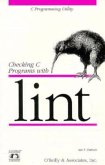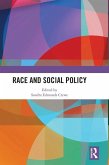Explores the basics of social policy and program analysis, such as designing new programs or evaluating and improving existing ones.
Social Policy and Social Programs is distinctive in providing specific criteria for judging the effectiveness of social policies and programs. These criteria can be applied to the analysis of widely different social services such as counseling and therapeutic services, supportive assistance, and "hard" benefits like food stamps, cash, and housing vouchers.
By focusing especially on social problems, policies, and programs in major practice areas like child welfare, health, poverty, and mental illness, the author provides students with the tools they need to understand and evaluate the programs in which they are doing their field placements.
Learning Goals
Upon completing this book readers will be able to:
Analyze the effectiveness of current social programs
Create new programs based on the criteria provided
Apply what they have learned to evaluate their field placement programs
Product Description
Explores the basics of social policy and program analysis, such as designing new programs or evaluating and improving existing ones.
Social Policy and Social Programs is distinctive in providing specific criteria for judging the effectiveness of social policies and programs. These criteria can be applied to the analysis of widely different social services such as counseling and therapeutic services, supportive assistance, and "hard" benefits like food stamps, cash, and housing vouchers.
By focusing especially on social problems, policies, and programs in major practice areas like child welfare, health, poverty, and mental illness, the author provides students with the tools they need to understand and evaluate the programs in which they are doing their field placements.
Upon completing this book readers will be able to:
Analyze the effectiveness of current social programs
Create new programs based on the criteria provided
Apply what they have learned to evaluate their field placement programs
Note: MySearchLab does not come automatically packaged with this text. To purchase MySearchLab, please visit: www.mysearchlab.com or you can purchase a ValuePack of the text + MySearchLab (at no additional cost): ValuePack ISBN-10: 0205222943 / ValuePack ISBN-13: 9780205222940.
Features + Benefits
The 6th edition features two new online chapters, one analyzing the legal context of social welfare programs and policies, and one analyzing the historical context of social welfare programs and policies. Both can be found in MySearchLab at the end of the chapters section.
Chapter 10 is a model chapter that uses child welfare legislation to highlight the methods and results of analysis, demonstrating the practical applications of the theoretical concepts.
Chapter 8: Analysis of Interactions Among Policy Elements discusses finance to further reinforce for students the practical implications of theoretical concepts. A case example is provided anddescribes using disparate funding sources to pay for the multiple services consumers need.
The emergence of for-profit corporations in social services financing and delivery is discussed and examples are provided.
Internet links for all federal agencies, major foundations, child welfare data, and other important sources are provided to students.
This text uses the most up-to-date information on current social programs.
Available instructor resources include:
PowerPoint Slides
Instructor's Manualand Test Bank
MyTest computerized Test Bank
Get Connected with MySearchLab: Provided with this text, MySearchLab provides engaging experiences that personalize, stimulate, and measure student learning. Pearson's MyLabs deliver proven results from a trusted partner in helping students succeed.Features available with this text include:
A complete eText-just like the printed text, you can highlight and add notes, listen to audio files, and more!
Assessment-chapter quizzes, topic-specific assessment and flashcards offer and report directly to your grade book.
Chapter-specific learning applications-ranging from videos to case studies, and more.
Writing and Research Assistance-a wide range of writing, grammar and research topics including access to a variety of databases that contain academic journals, census data, Associated Press newsfeeds, and discipline specific readings.
MySearchLab can be packaged with this text at no additional cost.
MyHelpingLibrary-contains over 150 readings and case studies, with assessment.
Videos-correlated to each chapter, as appropriate, including assessment.
Create a Custom Text: For enrollments of at least 25, create your own textbook by combining chapters from best-selling Pearson textbooks and/or reading selections in the sequence you want. To begin building your custom text, visit www.pearsoncustomlibrary.com. You may also work with a dedicated Pearson Custom editor to create your ideal text-publishing your own original content or mixing and matching Pearson content. Contact your Pearson Publisher's Representative to get started.
Found in this Section:
1. Brief Table of Contents
2. Full Table of Contents
1. BRIEF TABLE OF CONTENTS
Preface
PART ONE: CREATING THE CONTEXT FOR SOCIAL POLICY ANALYSIS: THE SOCIAL PROBLEM CONTEXT
Chapter 1: Analyzing the Social Problem Background of Social Policies and Social Programs
PART TWO: A STYLE OF POLICY ANALYSIS FOR THE PRACTICAL PUBLIC POLICY ANALYST
Chapter 2: An Overview of a Style of Policy Analysis: A Value-Critical Approach
Chapter 3: The Analysis of Policy Goals and Objectives in Social Programs and Policies
Chapter 4: Who Gets What: The Analysis of Types of Benefits and Services
Chapter 5: Who Gets What, How Much, and Under What Conditions: Analysis of Eligibility Rules
Chapter 6: Analysis of Service-Delivery Systems and Social Policy and Program Design
Chapter 7: How Do We Pay for Social Welfare Policies and Programs? Analysis of Financing
Chapter 8: Analysis of Interactions among Policy Elements
PART THREE: ANALYSIS OF SOCIAL POLICIES AND SOCIAL PROGRAMS USING BASIC CONCEPTS AND EVALUATION CRITERIA: AN EXAMPLE
Chapter 9: An Example of Social Policy and Social Program Analysis: Selected Features of Federal Child Welfare Legislation since 1970 Concerned with Child Abuse
Notes
Photo Credits
Index
2. FULL TABLE OF CONTENTS
Preface
PART ONE: CREATING THE CONTEXT FOR SOCIAL POLICY ANALYSIS: THE SOCIAL PROBLEM CONTEXT
Chapter 1: Analyzing the Social Problem Background of Social Policies and Social Programs
The Nature of Social Problems
Social Problem Analysis
Problem Definition
Causes and Consequences
Ideology and Values
Gainers and Losers
Using the Conclusions of Social Problem Analysis to Design Social Policies and Programs and to Judge Their "Fit" to the Social Problem
Summary
PART TWO: A STYLE OF POLICY ANALYSIS FOR THE PRACTICAL PUBLIC POLICY ANALYST
Chapter 2: An Overview of a Style of Policy Analysis: A Value-Critical Approach
The Policy and Program Analysis Process: An Overview of the Six Fundamental Policy Elements
Criteria for a Value-Critical Appraisal of Social Policy and Programs
Summary
Chapter 3: The Analysis of Policy Goals and Objectives in Social Programs and Policies
Introduction
Definitions and Basic Concepts for Analysis of Goals and Objectives
Different Types of Goals and Objectives
Long-Term/Short-Term Goals and Objectives
Goals Differ from Latent Social Functions
Distinguishing between Goals and Objectives
Objectives (Not Goals) Must Contain Target Group Specifications and Performance Standards
Why Have Both Goals and Objectives?
Setting Goals and Objectives in the Personal Social Services
Social Control and Program and Practice Objectives
Goals and Objectives Vary According to the Developmental Stage of the Program
Methods of Identifying Goals and Objectives
Step 1: Locate the Enabling Legislation
Step 2: Locate Legislative History
Step 3: Locate Staff and Committee Studies and Reports
Step 4: Check Other "Official" Sources
Locating Sources for Goals and Objectives in State-Administered and Private Social Programs
Evaluating Program or Policy System Goals and Objectives: A Value-Critical Approach
Evaluating the Fit between Goals and Objectives and the Social Problem Analysis
Evaluating Goals and Objectives against Traditional Economic Criteria: Adequacy, Equity, and Efficiency
Adequacy
Equity With Respect to Goals and Objectives
Efficiency With Respect to Goals and Objectives
Some Evaluation Criteria Unique to Goals and Objectives
Clarity
Measurability
Manipulability
Concern with Outcomes, Not Services Provided
The Analyst's Own Value Perspectives in Evaluating the Merit of Goals and Objectives
Summary
Chapter 4: Who Gets What: The Analysis of Types of Benefits and Services
Introduction
A Classification Scheme for Benefit and Service Types
Summary of Types of Benefits and Services
Multiple and Interrelated Benefits
Criteria for Evaluating the Merit of Benefit and Service Types
Stigmatization, Cost-Effectiveness, Substitutability, Target Efficiency, and Trade-Offs
The Political and Public Administration Viewpoint
Criteria for Evaluating the Merit of Benefit Types: Consumer Sovereignty, Coercion, and Intrusiveness
Criteria for Evaluating the Fit of the Benefit/Service Type to the Social Problem Analysis
Criteria for Evaluating the Merit of Benefit Forms: Adequacy, Equity, and Efficiency
Summary
Chapter 5: Who Gets What, How Much, and Under What Conditions: Analysis of Eligibility Rules
Introduction
Types of Eligibility Rules
Eligibility Rules Based on Prior Contributions
Eligibility by Administrative Rule and Regulation
Eligibility by Private Contract
Eligibility by Professional Discretion
Eligibility by Administrative Discretion
Eligibility by Judicial Decision
Eligibility by Means Testing
Establishing Attachment to the Workforce
Eligibility Inclusion and Exclusion
Criteria for Evaluating the Merit of Eligibility Rules
Fit with the Social Problem Analysis
Criteria Specific to Eligibility Rules
Trade-Offs in Evaluating Eligibility Rules
Overwhelming Costs, Overutilization, and Underutilization
Work Disincentives, Incentives, and Eligibility Rules
Procreati
Explores the basics of social policy and program analysis, such as designing new programs or evaluating and improving existing ones. Social Policy and Social Programs is distinctive in providing specific criteria for judging the effectiveness of social policies and programs. These criteria can be applied to the analysis of widely different social services such as counseling and therapeutic services, supportive assistance, and "hard" benefits like food stamps, cash, and housing vouchers. By focusing especially on social problems, policies, and programs in major practice areas like child welfare, health, poverty, and mental illness, the author provides students with the tools they need to understand and evaluate the programs in which they are doing their field placements. Learning Goals Upon completing this book readers will be able to: * Analyze the effectiveness of current social programs * Create new programs based on the criteria provided * Apply what they have learned to evaluate their field placement programs
Social Policy and Social Programs is distinctive in providing specific criteria for judging the effectiveness of social policies and programs. These criteria can be applied to the analysis of widely different social services such as counseling and therapeutic services, supportive assistance, and "hard" benefits like food stamps, cash, and housing vouchers.
By focusing especially on social problems, policies, and programs in major practice areas like child welfare, health, poverty, and mental illness, the author provides students with the tools they need to understand and evaluate the programs in which they are doing their field placements.
Learning Goals
Upon completing this book readers will be able to:
Analyze the effectiveness of current social programs
Create new programs based on the criteria provided
Apply what they have learned to evaluate their field placement programs
Product Description
Explores the basics of social policy and program analysis, such as designing new programs or evaluating and improving existing ones.
Social Policy and Social Programs is distinctive in providing specific criteria for judging the effectiveness of social policies and programs. These criteria can be applied to the analysis of widely different social services such as counseling and therapeutic services, supportive assistance, and "hard" benefits like food stamps, cash, and housing vouchers.
By focusing especially on social problems, policies, and programs in major practice areas like child welfare, health, poverty, and mental illness, the author provides students with the tools they need to understand and evaluate the programs in which they are doing their field placements.
Upon completing this book readers will be able to:
Analyze the effectiveness of current social programs
Create new programs based on the criteria provided
Apply what they have learned to evaluate their field placement programs
Note: MySearchLab does not come automatically packaged with this text. To purchase MySearchLab, please visit: www.mysearchlab.com or you can purchase a ValuePack of the text + MySearchLab (at no additional cost): ValuePack ISBN-10: 0205222943 / ValuePack ISBN-13: 9780205222940.
Features + Benefits
The 6th edition features two new online chapters, one analyzing the legal context of social welfare programs and policies, and one analyzing the historical context of social welfare programs and policies. Both can be found in MySearchLab at the end of the chapters section.
Chapter 10 is a model chapter that uses child welfare legislation to highlight the methods and results of analysis, demonstrating the practical applications of the theoretical concepts.
Chapter 8: Analysis of Interactions Among Policy Elements discusses finance to further reinforce for students the practical implications of theoretical concepts. A case example is provided anddescribes using disparate funding sources to pay for the multiple services consumers need.
The emergence of for-profit corporations in social services financing and delivery is discussed and examples are provided.
Internet links for all federal agencies, major foundations, child welfare data, and other important sources are provided to students.
This text uses the most up-to-date information on current social programs.
Available instructor resources include:
PowerPoint Slides
Instructor's Manualand Test Bank
MyTest computerized Test Bank
Get Connected with MySearchLab: Provided with this text, MySearchLab provides engaging experiences that personalize, stimulate, and measure student learning. Pearson's MyLabs deliver proven results from a trusted partner in helping students succeed.Features available with this text include:
A complete eText-just like the printed text, you can highlight and add notes, listen to audio files, and more!
Assessment-chapter quizzes, topic-specific assessment and flashcards offer and report directly to your grade book.
Chapter-specific learning applications-ranging from videos to case studies, and more.
Writing and Research Assistance-a wide range of writing, grammar and research topics including access to a variety of databases that contain academic journals, census data, Associated Press newsfeeds, and discipline specific readings.
MySearchLab can be packaged with this text at no additional cost.
MyHelpingLibrary-contains over 150 readings and case studies, with assessment.
Videos-correlated to each chapter, as appropriate, including assessment.
Create a Custom Text: For enrollments of at least 25, create your own textbook by combining chapters from best-selling Pearson textbooks and/or reading selections in the sequence you want. To begin building your custom text, visit www.pearsoncustomlibrary.com. You may also work with a dedicated Pearson Custom editor to create your ideal text-publishing your own original content or mixing and matching Pearson content. Contact your Pearson Publisher's Representative to get started.
Found in this Section:
1. Brief Table of Contents
2. Full Table of Contents
1. BRIEF TABLE OF CONTENTS
Preface
PART ONE: CREATING THE CONTEXT FOR SOCIAL POLICY ANALYSIS: THE SOCIAL PROBLEM CONTEXT
Chapter 1: Analyzing the Social Problem Background of Social Policies and Social Programs
PART TWO: A STYLE OF POLICY ANALYSIS FOR THE PRACTICAL PUBLIC POLICY ANALYST
Chapter 2: An Overview of a Style of Policy Analysis: A Value-Critical Approach
Chapter 3: The Analysis of Policy Goals and Objectives in Social Programs and Policies
Chapter 4: Who Gets What: The Analysis of Types of Benefits and Services
Chapter 5: Who Gets What, How Much, and Under What Conditions: Analysis of Eligibility Rules
Chapter 6: Analysis of Service-Delivery Systems and Social Policy and Program Design
Chapter 7: How Do We Pay for Social Welfare Policies and Programs? Analysis of Financing
Chapter 8: Analysis of Interactions among Policy Elements
PART THREE: ANALYSIS OF SOCIAL POLICIES AND SOCIAL PROGRAMS USING BASIC CONCEPTS AND EVALUATION CRITERIA: AN EXAMPLE
Chapter 9: An Example of Social Policy and Social Program Analysis: Selected Features of Federal Child Welfare Legislation since 1970 Concerned with Child Abuse
Notes
Photo Credits
Index
2. FULL TABLE OF CONTENTS
Preface
PART ONE: CREATING THE CONTEXT FOR SOCIAL POLICY ANALYSIS: THE SOCIAL PROBLEM CONTEXT
Chapter 1: Analyzing the Social Problem Background of Social Policies and Social Programs
The Nature of Social Problems
Social Problem Analysis
Problem Definition
Causes and Consequences
Ideology and Values
Gainers and Losers
Using the Conclusions of Social Problem Analysis to Design Social Policies and Programs and to Judge Their "Fit" to the Social Problem
Summary
PART TWO: A STYLE OF POLICY ANALYSIS FOR THE PRACTICAL PUBLIC POLICY ANALYST
Chapter 2: An Overview of a Style of Policy Analysis: A Value-Critical Approach
The Policy and Program Analysis Process: An Overview of the Six Fundamental Policy Elements
Criteria for a Value-Critical Appraisal of Social Policy and Programs
Summary
Chapter 3: The Analysis of Policy Goals and Objectives in Social Programs and Policies
Introduction
Definitions and Basic Concepts for Analysis of Goals and Objectives
Different Types of Goals and Objectives
Long-Term/Short-Term Goals and Objectives
Goals Differ from Latent Social Functions
Distinguishing between Goals and Objectives
Objectives (Not Goals) Must Contain Target Group Specifications and Performance Standards
Why Have Both Goals and Objectives?
Setting Goals and Objectives in the Personal Social Services
Social Control and Program and Practice Objectives
Goals and Objectives Vary According to the Developmental Stage of the Program
Methods of Identifying Goals and Objectives
Step 1: Locate the Enabling Legislation
Step 2: Locate Legislative History
Step 3: Locate Staff and Committee Studies and Reports
Step 4: Check Other "Official" Sources
Locating Sources for Goals and Objectives in State-Administered and Private Social Programs
Evaluating Program or Policy System Goals and Objectives: A Value-Critical Approach
Evaluating the Fit between Goals and Objectives and the Social Problem Analysis
Evaluating Goals and Objectives against Traditional Economic Criteria: Adequacy, Equity, and Efficiency
Adequacy
Equity With Respect to Goals and Objectives
Efficiency With Respect to Goals and Objectives
Some Evaluation Criteria Unique to Goals and Objectives
Clarity
Measurability
Manipulability
Concern with Outcomes, Not Services Provided
The Analyst's Own Value Perspectives in Evaluating the Merit of Goals and Objectives
Summary
Chapter 4: Who Gets What: The Analysis of Types of Benefits and Services
Introduction
A Classification Scheme for Benefit and Service Types
Summary of Types of Benefits and Services
Multiple and Interrelated Benefits
Criteria for Evaluating the Merit of Benefit and Service Types
Stigmatization, Cost-Effectiveness, Substitutability, Target Efficiency, and Trade-Offs
The Political and Public Administration Viewpoint
Criteria for Evaluating the Merit of Benefit Types: Consumer Sovereignty, Coercion, and Intrusiveness
Criteria for Evaluating the Fit of the Benefit/Service Type to the Social Problem Analysis
Criteria for Evaluating the Merit of Benefit Forms: Adequacy, Equity, and Efficiency
Summary
Chapter 5: Who Gets What, How Much, and Under What Conditions: Analysis of Eligibility Rules
Introduction
Types of Eligibility Rules
Eligibility Rules Based on Prior Contributions
Eligibility by Administrative Rule and Regulation
Eligibility by Private Contract
Eligibility by Professional Discretion
Eligibility by Administrative Discretion
Eligibility by Judicial Decision
Eligibility by Means Testing
Establishing Attachment to the Workforce
Eligibility Inclusion and Exclusion
Criteria for Evaluating the Merit of Eligibility Rules
Fit with the Social Problem Analysis
Criteria Specific to Eligibility Rules
Trade-Offs in Evaluating Eligibility Rules
Overwhelming Costs, Overutilization, and Underutilization
Work Disincentives, Incentives, and Eligibility Rules
Procreati
Explores the basics of social policy and program analysis, such as designing new programs or evaluating and improving existing ones. Social Policy and Social Programs is distinctive in providing specific criteria for judging the effectiveness of social policies and programs. These criteria can be applied to the analysis of widely different social services such as counseling and therapeutic services, supportive assistance, and "hard" benefits like food stamps, cash, and housing vouchers. By focusing especially on social problems, policies, and programs in major practice areas like child welfare, health, poverty, and mental illness, the author provides students with the tools they need to understand and evaluate the programs in which they are doing their field placements. Learning Goals Upon completing this book readers will be able to: * Analyze the effectiveness of current social programs * Create new programs based on the criteria provided * Apply what they have learned to evaluate their field placement programs







